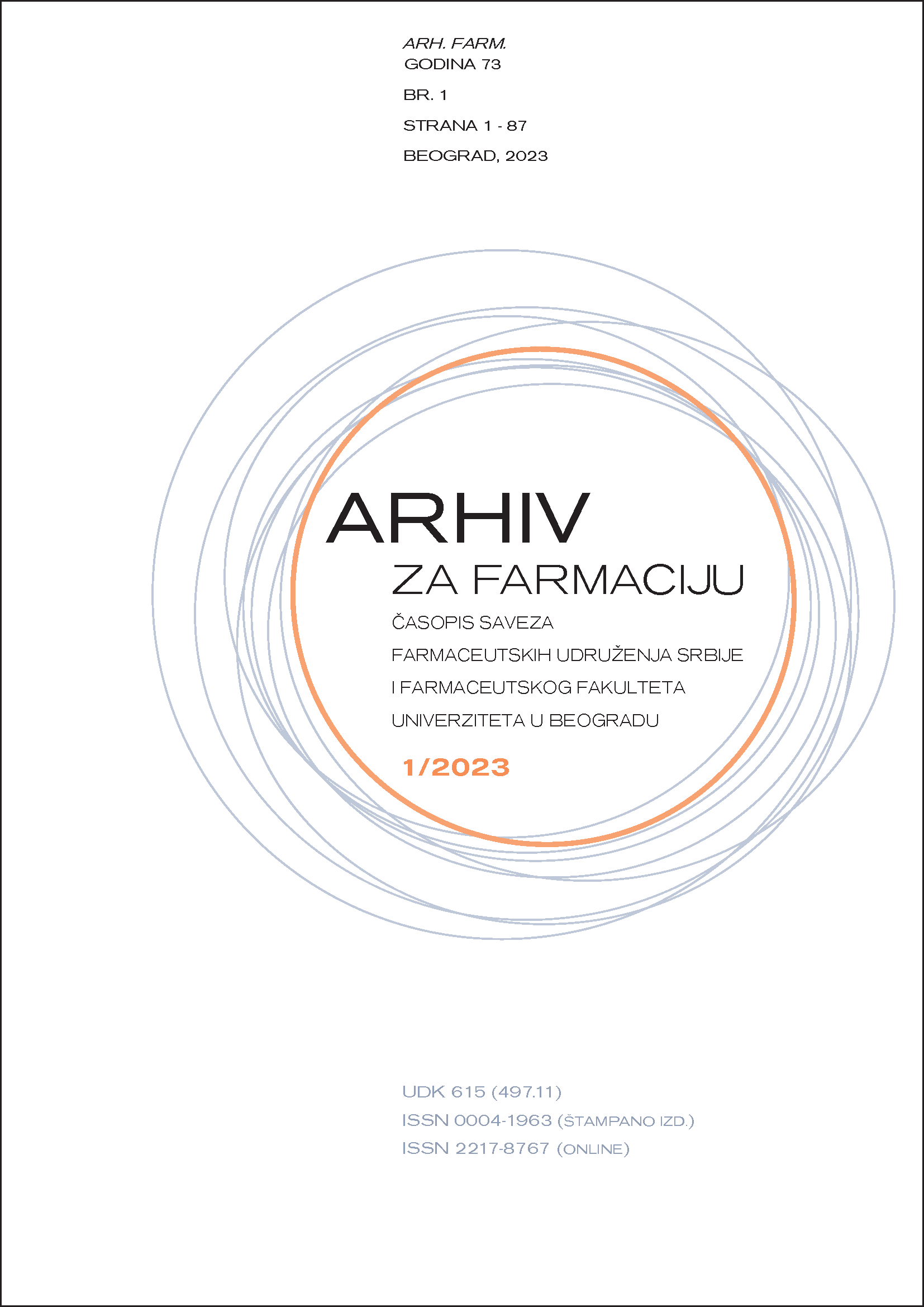Comparative Risk Assessment Study of Elemental Impurities in Montelukast Chewable Tablets and Film-coated Tablets
Abstract
It is well documented that elemental impurities (EIs) are critical in the field of pharmaceutical development since they could affect the quality, efficacy and safety of the finished dosage form (FDF). The responsibility of pharmaceutical manufacturers is to demonstrate via assessment approach, risk-based control strategy and/or required data analysis that the FDFs are compliant with ICH Q3D (R2). The aim of this research is to conduct a comprehensive comparative EIs risk assessment study of three different Montelukast dosage forms produced as chewable tablets (4 mg and 5 mg) and film-coated tablets 10 mg. The inductively coupled plasma-mass spectrometry (ICP-MS) system was used for the determination of EIs in samples of Montelukast sodium as the active pharmaceutical ingredient (API), placebos for all FDFs, and FDFs. Moreover, the analyses were also conducted on three batches from all three studied FDFs. Based on ICH Q3D (R2) guidelines, the tested products for EIs Class 1 and Class 2A showed that EIs levels in the API and placebos are well below the ICH Option 1 oral and parenteral limits. For the examined batches of each FDF strength (total of 9), none of the EI exceeds their concentration limits.
References
1. International Council for Harmonization of Technical Requirements for Pharmaceuticals for Human Use - ICH Harmonized Guideline for EIs Q3D(R2). 2022.
2. European Medicines Agency (EMA). Committee for Human Medicinal Products. ICH guideline Q3D on EIs. EMA/CHMP/ICH/353369/2013. 2015.
3. EDQM EU [Internet]. European Pharmacopoeia (Ph. Eur.). 10th Edition | EDQM - European Directorate for the Quality of Medicines [cited 2022 Feb 20]. Available from: <https://www.edqm.eu/en/european-pharmacopoeia-ph-eur-10th-edition>
4. USP 35 [Internet]. United States Pharmacopeia and the National Formulary (USP 35 - NF 30). Rockville (MD): The United States Pharmacopeial Convention [cited 2022 Feb 20]. Available from: https://www.usp.org/.
5. Barin JS, Mello PA, Mesko MF, Duarte FA, Flores EM. Determination of elemental impurities in pharmaceutical products and related matrices by ICP-based methods: a review. Anal Bioanal Chem. 2016;408(17):4547-66.
6. Gandhi HM, Gollapalli NR, Lilakar JK, Jain KK, Mohanty S. Isolation and identification of a potential unknown impurity in montelukast drug substance resulting from photolytic degradation. Anal Methods. 2016;8,1667-73.
7. Emerce E, Cok I, Degim IT. Determination of the impurities in drug products containing montelukast and in silico/in vitro genotoxicological assessments of sulfoxide impurity. Toxicol Lett. 2015;238(2):90-9.
8. Balabanova B, Boev B, Mitrev S, Ivanova V. Method for determination of 35 elements content in various samples with the application of microwave digestion and inductively coupled plasma with mass spectrometry (ICP-MS). Journal of Agriculture and Plant Sciences. 2015;13(1):99-112.
9. Teasdale A, Chéry CC, Cook G, Glennon J, Lee CW, Harris L, et al. Implementation of ICH Q3D EIs Guideline: Challenges and Opportunities. Pharm Technol. 2015;39(3):36-49, 89.
10. Rowe RC, Sheskey PJ, Quinn ME. Handbook of Pharmaceutical Excipients. 6th Edition. Pharmaceutical Press. 2009.
11. Jenke DR, Stults CL, Paskiet DM, Ball DJ, Nagao LM. Materials in Manufacturing and Packaging Systems as Sources of Elemental Impurities in Packaged Drug Products: A Literature Review. PDA J Pharm Sci Technol. 2015 1/2;69(1):1-48.
12. Internal data of the Manufacturer (available if necessary): statements received from suppliers, manufacturing instructions, packaging instructions, specifications, and results of the analysis.
13. Directive (EU) 2018/852 of the European Parliament and of the Council of 30 May 2018 amending Directive 94/62/EC on packaging and packaging waste (Text with EEA relevance).
14. European Parliament and Council Directive 94/62/EC of 20 December 1994 on packaging and packaging waste - OJ L 365, 31.12.1994, p. 10–23 (ES, DA, DE, EL, EN, FR, IT, NL, PT).
15. Regulation (EC) no. 1935/2004 of the European Parliament and of the Council of 27 October 2004 on materials and articles intended to come into contact with food and repealing directives 80/590/EEC and 89/109/EEC [Internet] [cited 2022 Sep 30]. Available from: https://www.legislation.gov.uk/eur/2004/1935/contents.>
16. Commission regulation (EC) no 2023/2006 of 22 December 2006 on Good Manufacturing Practice for materials and articles intended to come into contact with food (text with EEA Relevance) [Internet] [cited 2022 Sep 11]. Available from: https://www.legislation.gov.uk/eur/2006/2023/adopted.>
17. Commission regulation (EU) no 10/2011 of 14 January 2011 on plastic materials and articles intended to come into contact with food (Text with EEA relevance) [Internet] [cited 2022 Sep 12]. Available from: https://www.legislation.gov.uk/eur/2011/10/2020-12-31
18. Annex 5 supplementary guidelines on good manufacturing practices for heating, ventilation, and air- conditioning systems for non-sterile pharmaceutical dosage forms [Internet]. Docslib [cited 2022 Sep 10]. Available at: https://docslib.org/doc/4637981/annex-5-supplementary-guidelines-on-good-manufacturing-practices-for-heating-ventilation-and-air-conditioning-systems-for-non-sterile-pharmaceutical-dosage-forms.>

